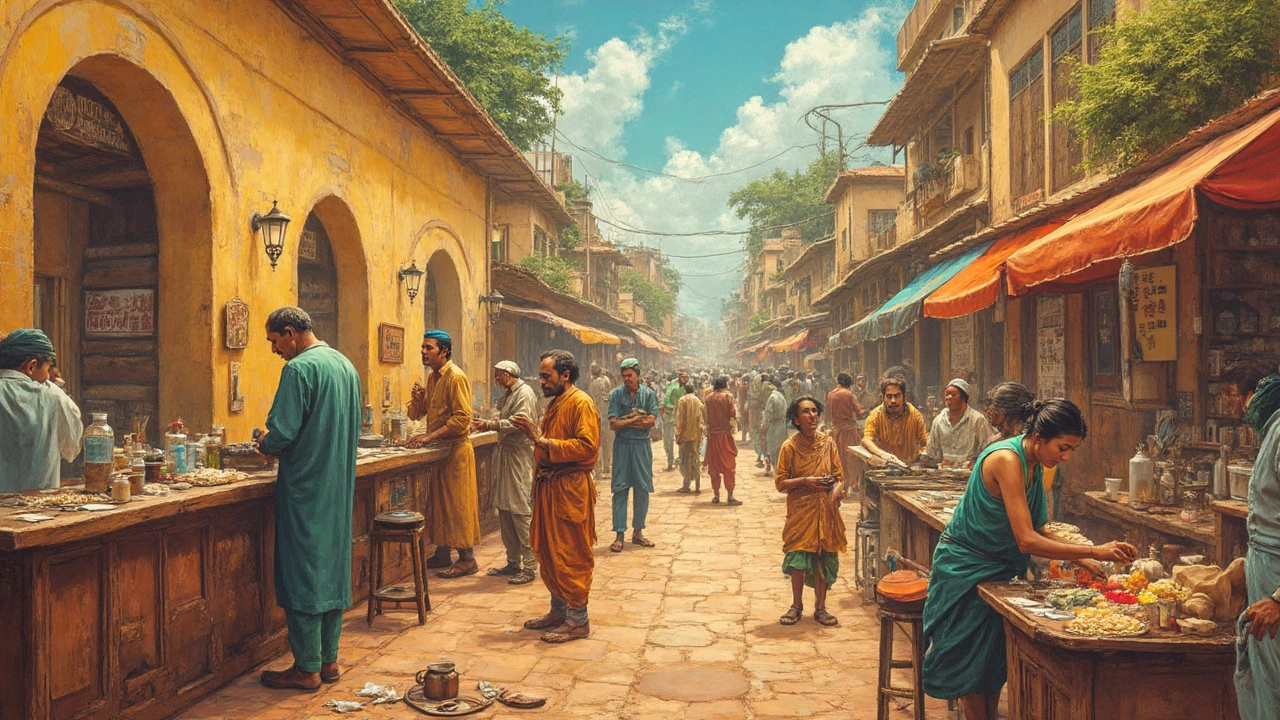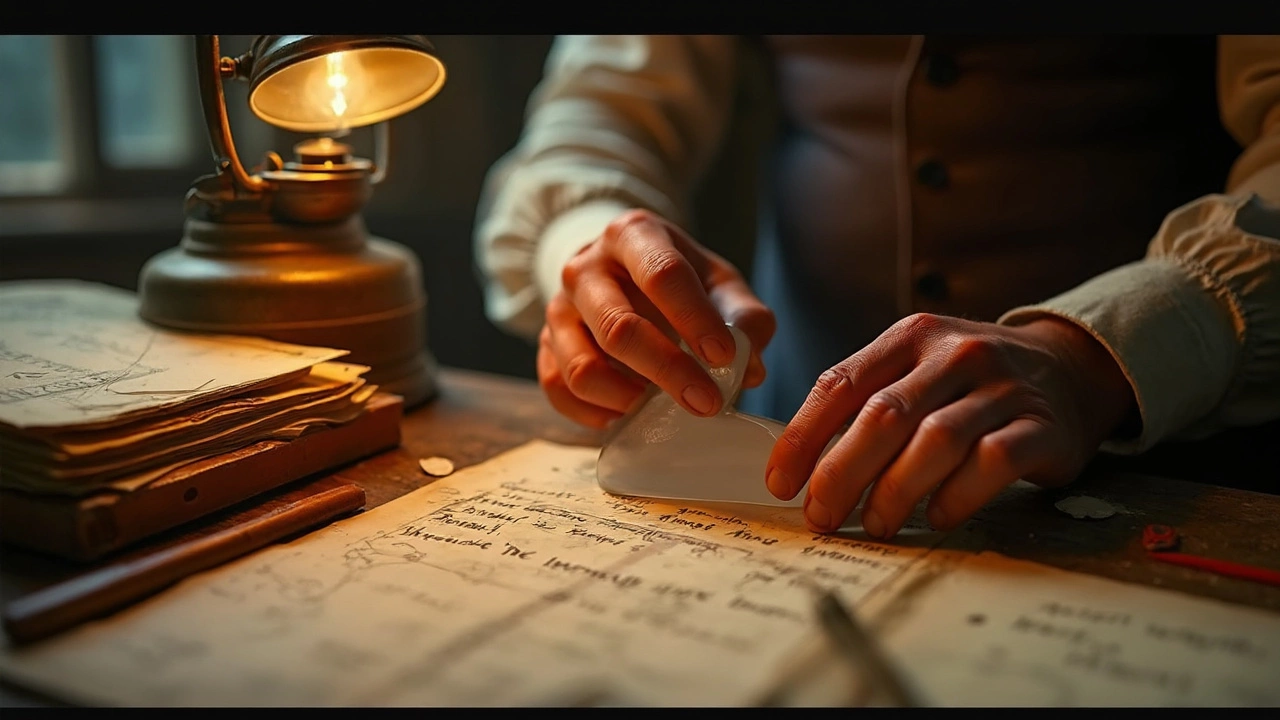Who Invented Plastic? Origins, Innovators, and the Rise of Plastic Manufacturing

Ever wonder who really pulled plastic out of thin air? It's not as straightforward as pointing to one person or one year. Early inventors actually went after something much simpler—replacing expensive natural materials like ivory and tortoiseshell.
You won’t believe it, but the first plastic was cooked up in a makeshift lab in the 19th century. No high-tech factories, just big dreams and a bit of chemistry. These early tinkerers weren’t thinking about shopping bags or smartphone cases—they wanted to make billiard balls, combs, and collar stays for dress shirts.
The reason this matters? The journey from inventing those first plastic-like materials to the giant companies cranking out millions of products today is a wild ride. If you’re working with plastics, manufacturing stuff, or just want to know what you’re handling every day, you’ve got to know how it all started and how the legends of the plastic industry built their empires.
- The Original Plastic: Early Experiments
- Alexander Parkes and the Birth of Parkesine
- Leo Baekeland’s Bakelite Revolution
- Plastic Takes Over: World War II and Beyond
- How Manufacturing Companies Changed the Game
- Cool Facts and Surprising Uses
The Original Plastic: Early Experiments
You might think plastic is a recent invention, but inventors have been chasing plastic-like stuff for over 150 years. The journey kicked off in the mid-1800s, long before anyone could imagine food wrappers or credit cards. The first folks were actually looking for something that would work like ivory—think billiard balls, piano keys, or buttons—without killing elephants.
One of the earliest breakthroughs happened in 1856 when Alexander Parkes created a material called Parkesine. Parkesine came from cellulose, which is basically plant fiber treated with chemicals. It could be molded into shapes when heated and kept its form when cooled—a huge deal back then.
Around the same time, John Wesley Hyatt—a New Yorker—ran with this idea after there was a $10,000 contest to find a replacement for ivory billiard balls. Hyatt developed what he called celluloid in 1869, marking the first time anyone made a true commercial plastic. Celluloid found its way into everything from toothbrush handles to film for old-school cameras.
Here's a quick side-by-side of these early plastics:
| Year | Inventor | Name | Main Use |
|---|---|---|---|
| 1856 | Alexander Parkes | Parkesine | Combs, jewelry, buttons |
| 1869 | John Wesley Hyatt | Celluloid | Billiard balls, film, everyday items |
These early experiments didn’t look or feel much like the plastics you know today. They were kind of flammable, not super durable, and yellowed over time. But they were cheap and easy to produce, so it was game-changing for manufacturers and inventors looking to cut costs and make stuff accessible for the masses.
What made all this possible was the realization that you could take organic materials, tweak them with chemistry, and end up with something moldable. That’s what set the stage for every plastic manufacturer that came later.
Alexander Parkes and the Birth of Parkesine
If you’ve ever heard someone ask, who invented plastic, here’s the name you need to remember: Alexander Parkes. Back in 1856, this British inventor came up with something new and called it Parkesine. It was the first man-made plastic, and it hit the scene at London’s 1862 Great International Exhibition. People were stunned—you could shape it, color it, even carve it. It almost felt like ivory, but it wasn’t from animals.
Parkesine was made by treating cellulose (yep, the stuff in plants) with nitric acid and a bit of oil. Parkes wanted to make cheap everyday items that usually needed ivory or horn—think buttons, knife handles, and even jewelry.
Here’s where it gets interesting for anyone thinking about plastic manufacturing companies: Parkesine wasn’t easy to make in bulk. The process was pretty unstable, and sometimes the stuff cracked or warped. Still, Parkes was onto something. He even tried forming a business, The Parkesine Company, in 1866. It didn’t last long (wobbly products will do that), but the idea was out there—and a few years later, others took it further.
| Fact | Detail |
|---|---|
| Year Invented | 1856 |
| Main Ingredient | Cellulose from plants |
| First Major Demo | London, 1862 Exhibition |
| First Use Cases | Buttons, combs, small trinkets |
Parkesine set the stage for bigger inventions in the plastic industry. Even though the first commercial attempt fizzled, the rush to invent better, tougher plastics had started—and the world was never the same.

Leo Baekeland’s Bakelite Revolution
If you’re digging into who invented plastic, you can’t skip Leo Baekeland. This Belgian-American chemist didn’t just stumble across a new material—he changed the world with Bakelite in 1907. Up until then, plastics usually stuck to natural stuff as a base. Bakelite was different. It was the first true synthetic plastic, made fully from lab-made chemicals, not anything you could grow or hunt.
Baekeland’s breakthrough came when he figured out how to make a hard, moldable material by mixing phenol and formaldehyde under heat and pressure. What made Bakelite a game changer was its non-conductivity and heat-resistance. Suddenly, it was perfect for stuff like electrical switches, appliance handles, radio casings, and even jewelry.
Manufacturers jumped at the chance. Bakelite could be mass-produced and shaped into practically anything the 1920s consumer wanted. By the 1930s, if you picked up a telephone receiver or turned on the radio, odds are you were touching Bakelite. It was the first material that totally broke free from the limits of natural resources like ivory, wood, or horn.
- It didn’t melt or burn easily—great for early electronics.
- It could be colored and shaped with simple molds.
- Production exploded. Bakelite was everywhere from auto parts to kitchen gadgets.
How about some numbers? By the 1940s, Bakelite’s parent company, General Bakelite Company, was pumping out tens of thousands of tons per year. Here’s a peek at what made Bakelite boom:
| Year | Bakelite Production (tons) |
|---|---|
| 1910 | Less than 1,000 |
| 1925 | 8,000 |
| 1944 | 45,000+ |
Baekeland’s invention didn’t just kick off the plastic industry—it started a rush. Soon, other companies and scientists hustled to create new plastics with fresh features, leading to the wild variety of materials we see in manufacturing today. If you ever open up an old radio and see that brown, hard plastic inside, you’re looking at history in your hands.
Plastic Takes Over: World War II and Beyond
World War II didn’t just change global politics—plastic truly earned its keep during this era. Before the 1940s, plastics like Bakelite and celluloid were around, but demand exploded once war started. Armies needed cheaper, lighter alternatives for items like airplane parts, parachutes, and even boots. Metal shortages pushed inventors and companies to ramp up plastic manufacturing at a crazy pace.
Nylon, for example, hit the scene right before the war as a silk substitute for stockings, but it quickly got snapped up for parachutes and ropes. Polyethylene—now the most common plastic—was first cooked up in Britain in 1933, but saw secret use as insulation in radar cables during the war. This low-key shift changed the game for future electronics and packaging industries.
| Material | Wartime Use | Everyday Use Today |
|---|---|---|
| Nylon | Parachutes, rope | Clothing, toothbrushes |
| Polyethylene | Radar insulation | Bags, bottles, films |
| Plexiglass | Aircraft windows | Glazing, screens |
Once peace returned, those same factories didn’t just shut down—they switched over to churning out products for daily life. Remember Tupperware parties? That’s post-war plastic boom in action. Manufacturers found ways to turn strong, cheap materials into everything from kitchenware to toys and furniture. It didn’t take long for plastic manufacturers to realize almost anything could be made from this stuff if you had the right molds and marketing.
Here's a tip: If you want to understand any modern plastic manufacturing process, look back at the scaling and innovation that happened during the ‘40s and ‘50s. Factories switched from slow, custom molding to high-speed, mass production—think injection molding and extrusion. These became the backbone for how companies crank out billions of plastic products every year now.
So next time you see a product labeled ‘Made from recycled WWII tech,’ you’ll know it’s not just a catchy phrase. The entire plastic industry as we know it took off because the world needed fast, cheap, and tough materials—and World War II delivered the kickstart.

How Manufacturing Companies Changed the Game
When we talk about the rise of plastic manufacturers, we’re really talking about a turning point in modern history. Those early inventors made the first leap, but it was the manufacturing companies that took the ball and ran with it. Once the formulas for Bakelite and celluloid hit the scene, companies started setting up serious production lines. It wasn’t just a couple guys in labs anymore—now it was factories pumping out goods at scale.
Big names like DuPont, BASF, and Dow Chemical didn’t waste time. By the 1920s and ’30s, DuPont was making everything from nylon stockings (a wild hit) to parachutes and even car parts. In the U.S., polyethylene was discovered by accident in a British lab, but it was American manufacturers who figured out how to mass produce it during World War II. Suddenly, plastic wasn’t just for billiard balls and buttons—it was becoming the backbone of packaging, electronics, and all sorts of things people used every day.
Wartime needs really kicked the industry into high gear. Factories cranked out plastic helmets, airplane windows, and even parts for radios. Check out these numbers that show just how much the world changed:
| Year | World Plastic Production (Million Tons) |
|---|---|
| 1950 | 2 |
| 1976 | 50 |
| 2020 | 367 |
This explosion in production came with a bunch of mega trends. Plastic manufacturing companies figured out how to do things faster and cheaper. Injection molding and extrusion machines made custom plastics a reality. Suddenly, you could get a water bottle, a toy, or a piece for your car in pretty much any color or shape you wanted. That flexibility made plastic king.
If you’re curious about how products are made today, basically every major brand out there works with these manufacturing giants. Companies like SABIC, ExxonMobil, and LyondellBasell have their hands in all the stuff we use daily—containers, phone cases, medical gear, and even sneakers. So, the ordinary stuff you toss in the recycling bin? Chances are, it came from a global plastics powerhouse.